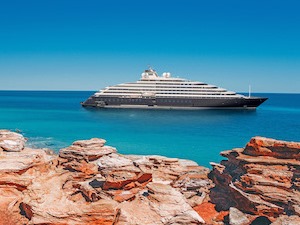If, like us at Motive Travel, you have watched the famous Cox Plate race either on television or at the legendary Mooney Valley Racing Club itself, you must have a fine appreciation for the competing horses. After all, it can’t be easy carrying a fully grown human on your back (no matter how much they diet!), running as fast as you can on a packed course, all the while trying to cross the finish line before your equine friends.
Just earning a starting spot at the Cox Plate takes a horse of tremendous talent, so it must make you wonder how these fantastic creatures are actually trained to race. Let’s take a look at just how to train a Cox Plate runner.
A winner is born
Even before your potential Cox Plate winner is born, you need to ensure that his or her racing pedigree comes from fine racing stock. This means tracing the lineage through the ages, often going back decades. See a few winners in that family tree? If so, your unborn foal has the potential to be a great racehorse.
Just earning a starting sport at the Cox Plate takes a horse of tremendous talent.
Once your little foal is walking and steady on its feet, it’s time to get them used to life as a racehorse. They will have to get used to human contact, as well as wearing the uniform of a racehorse – the saddle, the girth, and how a bit feels in their mouth. In time, they will learn how to cope with the extra weight of a jockey – and this is all before a training proper begins!
It’s during this early phase that young horses will learn how to enter a starting gate, stand motionless as it closes, and run when it opens. Additionally, the personality of a horse will also be evaluated – do they need strict guidance, or is the softer touch a better option? Other personality traits will also be examined – are they nervous, alert, keen? A horse that spooks easily does not a Cox Plate winner make!
Training to be perfect
At around the age of 18 months, the horse will be trained to canter with a group of other horses. After a few weeks’ break, your horse will eventually learn how to quicken its pace to a full-blown gallop. Walking, trotting and cantering remain a staple part of training, with a different rein used each day to help muscles develop in an even fashion.
As strength increases, racehorses are then introduced to ‘the gallops’, a gradual incline such as a hill that will increase strength and cardiovascular fitness yet further. To begin with, your horse may not be able to run faster than a moderate canter, but, over time, pace and endurance will increase to top speed! Typically, this kind of work is done alongside other horses, mimicking a race situation. At this part of their training, horses are also taught to respond to the commands of the jockey atop them, as they would in a race situation.
A day in the life…
A racehorse-in-training’s day begins at 5 a.m., when he or she is given a first feed. Up until midday, horses will be moderately exercised and at midday, will enjoy their second feed. After their lunch, horses will have ‘quiet time’, where they can relax in their stable up until the late afternoon. At this point, horses will be groomed, checked for injuries, and may go for a walk. When 9 p.m. falls, they are given one last check, perhaps a final feed, and the doors shut. The cycle starts again next morning, right up until race day!
It’s worth remembering, of course, that of all the horses trained to be winners, only a very, very small percentage of them will ever win a race. The Cox Plate is one of the toughest races of all, and to witness the talent and skill on show is an experience that you should not miss. With Motive Travel, you can be there – contact our friendly team to find out more!











